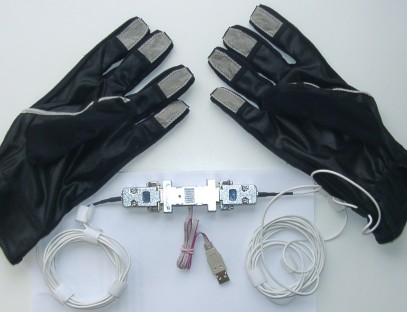
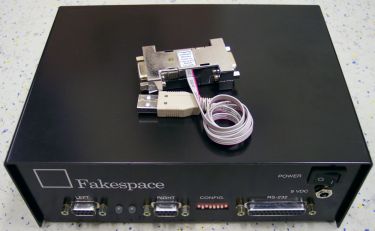
Yet another controlling device for the fingertip contact glove called
„Pinch Glove“
made by company
Fakespace.


This is the reconstruction of a “Fakespace GL-8001” device with fully compatible serial interface via USB.
Much better would be an implementation as HID device, but that will cut software compatibility to the original Fakespace box.
This device fits into a very small SubD adapter housing, consumes low power (max. 20 mA), supports USB standby, may support a USB remote wakeup feature later, is much faster in responsiveness than the GL-8001, and the electronic components are fairly cheap, < 5 €.
Resistor arrays in place of single resistors and multi-diodes are
easier to populate and (really!) cheaper at
![]() Reichelt.
Reichelt.
With the updated V-USB driver you can get rid of the crystal
Q1
and the capacitors C1
and C2.
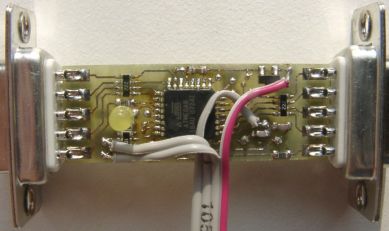
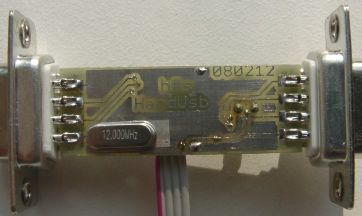
The firmware written is based on V-USB by Objective Development and AVR-CDC by Osamu Tamura. Therefore, when plugging this device, a serial port occures ready for communication fully compatible to the original GL-8001 box.
As for V-USB-CDC projects, baud rate setting is not critical. Drivers are built-in into Windows (Win2k and newer) and Linux. The user can connect self-made gloves too. (The GL-8001 box only knows Fakespace gloves.)
Schematic and PCB layout are made with
Eagle and available for download.
The ATmega8 firmware and a demonstration program are downloadable
with source code.
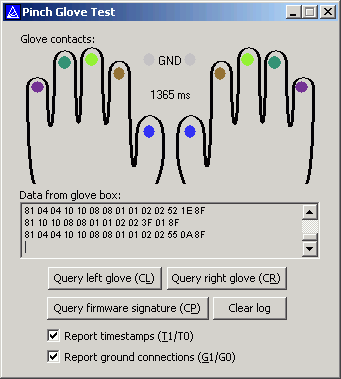
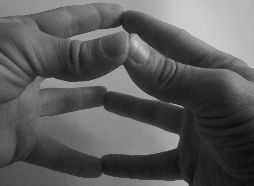
This demo program shows the up-to-five contact groups in different colors, as you may have seen in the original DOS demo software.
Note that the original DOS demo software will not run with HandUsb, because the USB emulated serial port has no I/O address for access. Therefore I rewrote that demo program.
At this time (2017) I would reconstruct that device using PIC16F1459, this would save money, board space (for the crystal), and trouble with Windows Vista and newer (CDC implemented on USB Low-Speed is forbidden and enforced there).